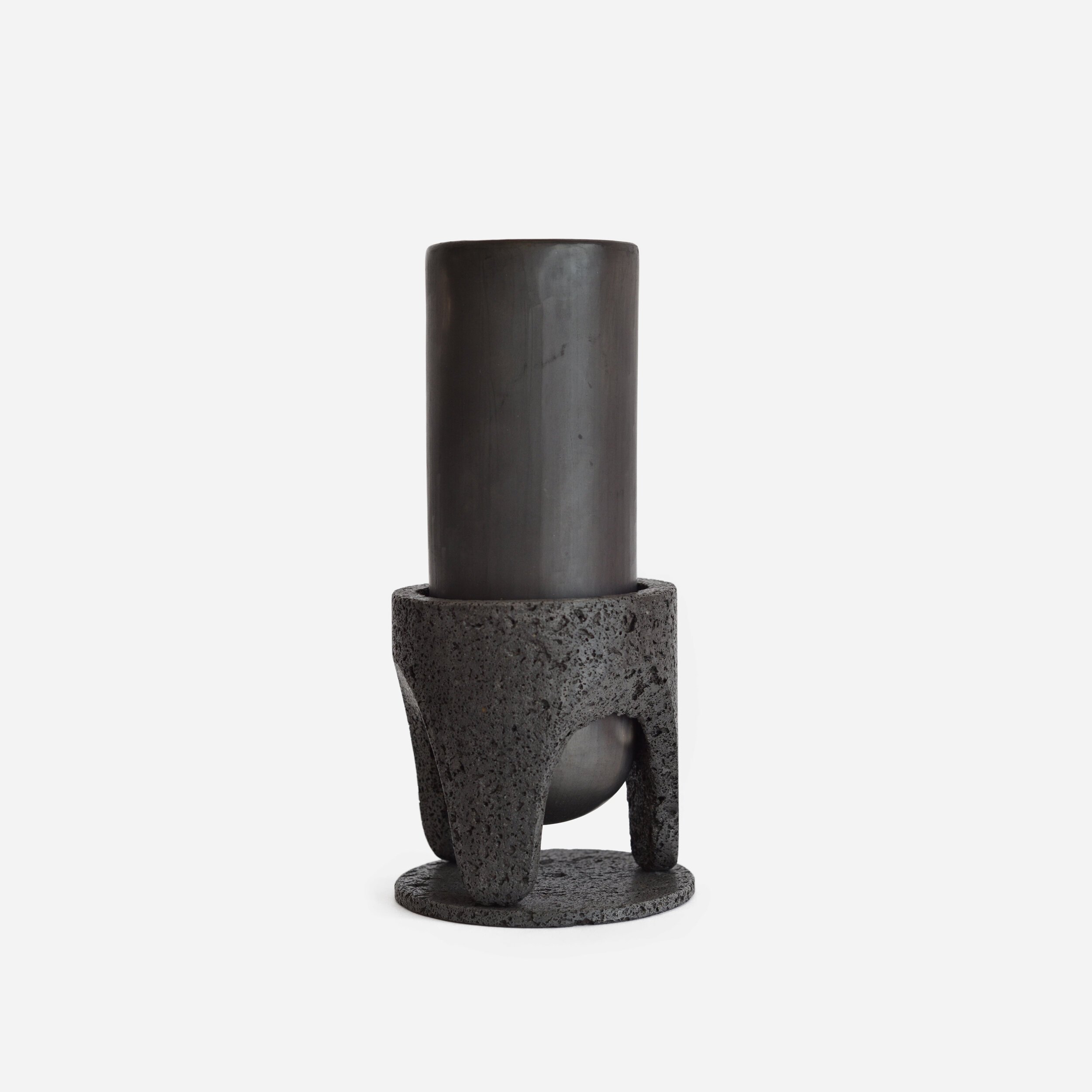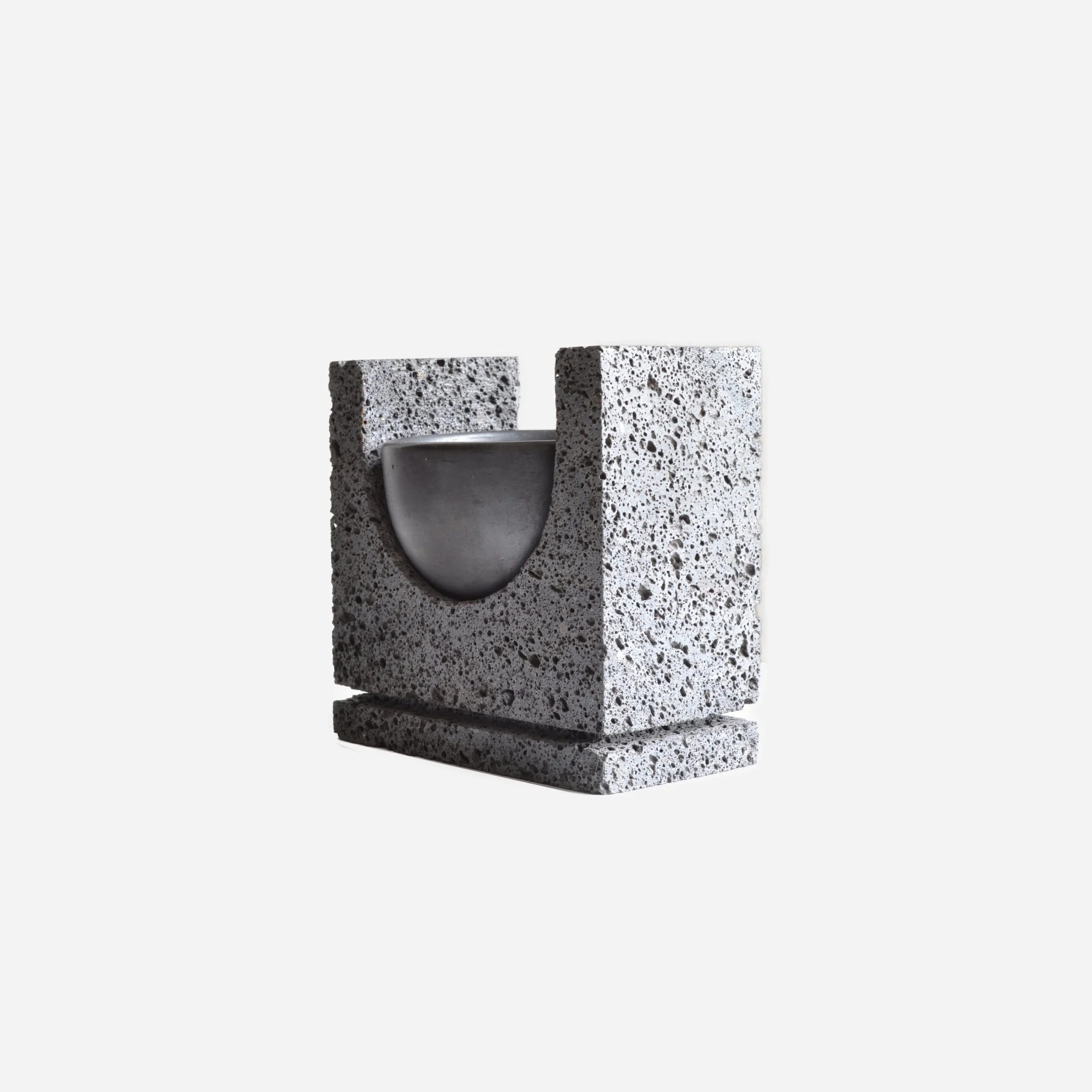In the Náhuatl language Xopan means “Time of green” which in turn refers to spring.
Xopan is a variation of Manantial (spring) the vase has been scratched to generate grooves that keeps seeds to germinate.
The piece transforms from a black element to a living element that germinates the green.
It is a Spring, water that flows from the mud to the stone to give life to the plants that cover the ground.
The spring and the cycle of nature.
Is a vase that is held off the ground by a hand-carved stone base,
The vase resists fire below 950 degrees so it can be used to burn charcoal inside it or incense or contain water for flowers and plants.
The vase made of black Oaxacan clay filters a very light humidity through its walls, which are cooked at a low temperature with wood and not glaze.
The base of Xopan is made of volcanic stone known as recinto.
The shape of the base is inspired by the legs of the traditional molcajete that is used to grind spices and chili peppers while the arches refer to the basic shape of the entrance to a cave creating an empty space between the ground and the black clay vase.
In the Náhuatl language Xopan means “Time of green” which in turn refers to spring.
Xopan is a variation of Manantial (spring) the vase has been scratched to generate grooves that keeps seeds to germinate.
The piece transforms from a black element to a living element that germinates the green.
It is a Spring, water that flows from the mud to the stone to give life to the plants that cover the ground.
The spring and the cycle of nature.
Is a vase that is held off the ground by a hand-carved stone base,
The vase resists fire below 950 degrees so it can be used to burn charcoal inside it or incense or contain water for flowers and plants.
The vase made of black Oaxacan clay filters a very light humidity through its walls, which are cooked at a low temperature with wood and not glaze.
The base of Xopan is made of volcanic stone known as recinto.
The shape of the base is inspired by the legs of the traditional molcajete that is used to grind spices and chili peppers while the arches refer to the basic shape of the entrance to a cave creating an empty space between the ground and the black clay vase.







































